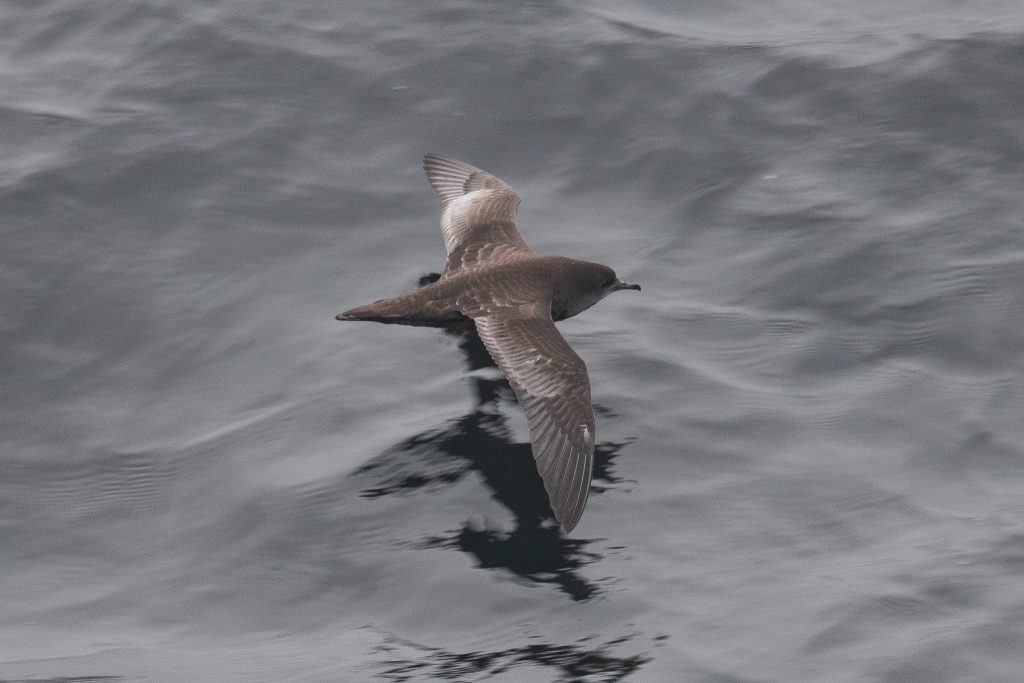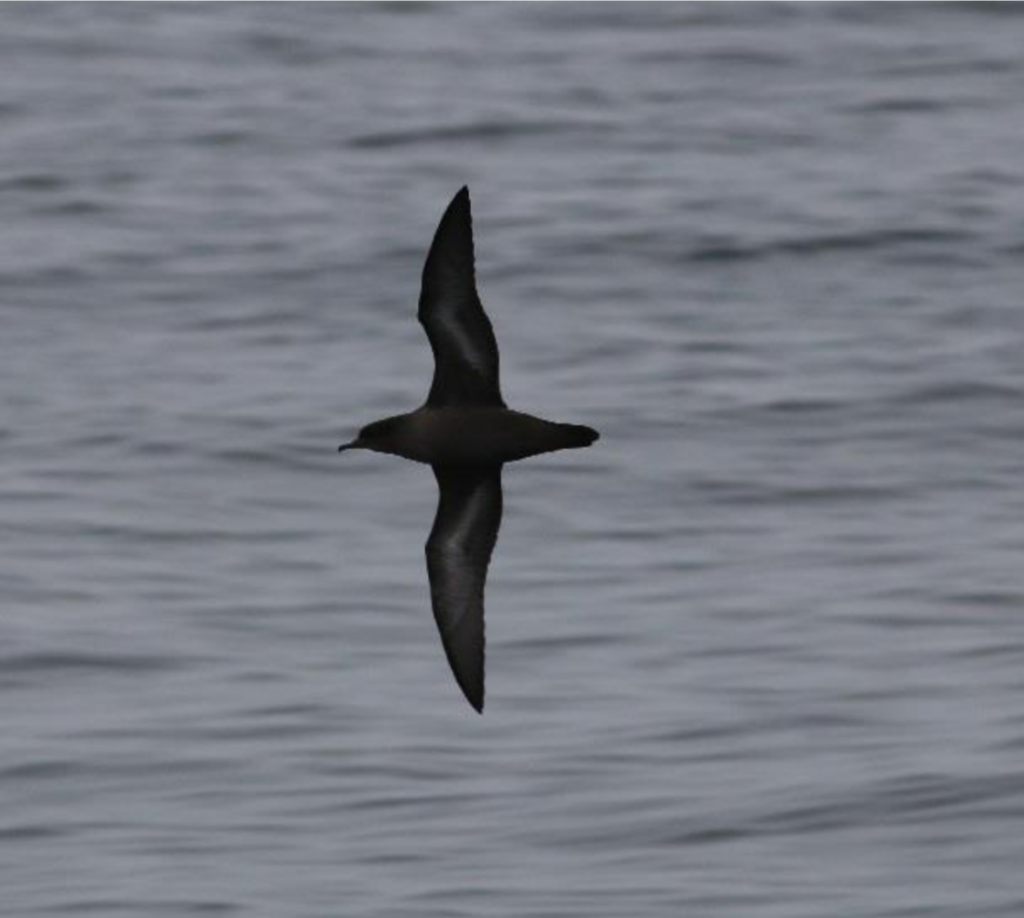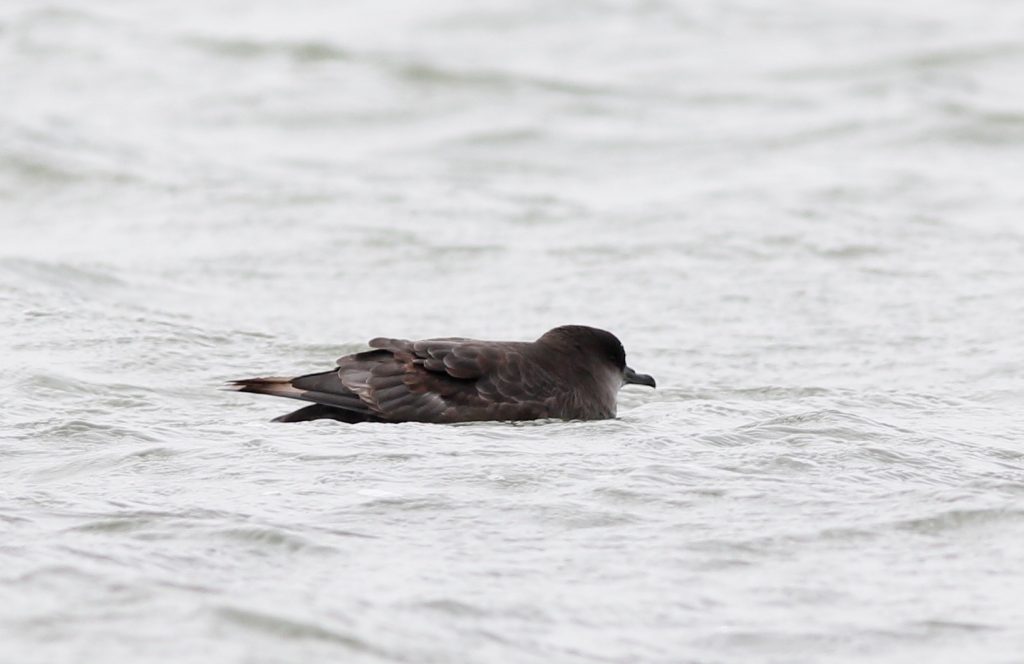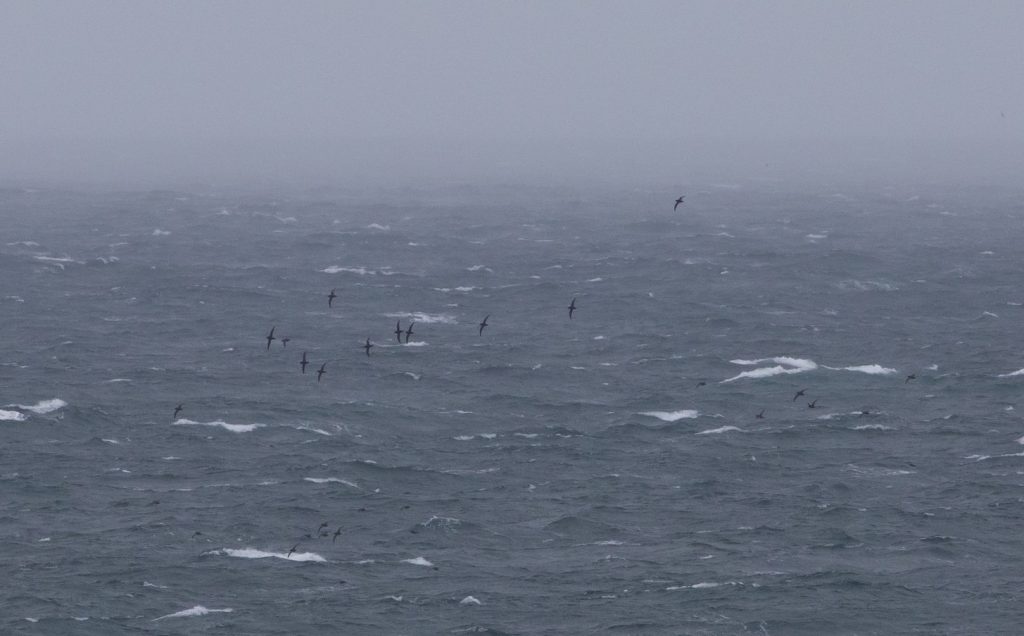The most common non-breeding pelagic species in the Bering Sea during the summer, large numbers are often noted from land in the Pribilofs associated with storms, while small numbers are seen daily during summer and fall. This species is typically not recorded with regularity until the end of May or beginning of June from which point numbers build into summer with increased numbers usually not noted until after July 1st. Late summer and early fall (August and September) is when the largest numbers of birds are typically sighted, with the earliest summer count of 10,000 or more on July 27th. Counts of greater than 100,000 birds have been made between August 3rd and September 4th, with the final count above 10,000 birds on September 11th. Small numbers are still frequently seen through mid-October though no records exist after that time, likely due to a lack of coverage at that season as this species should be sighted into late fall or even early winter.




